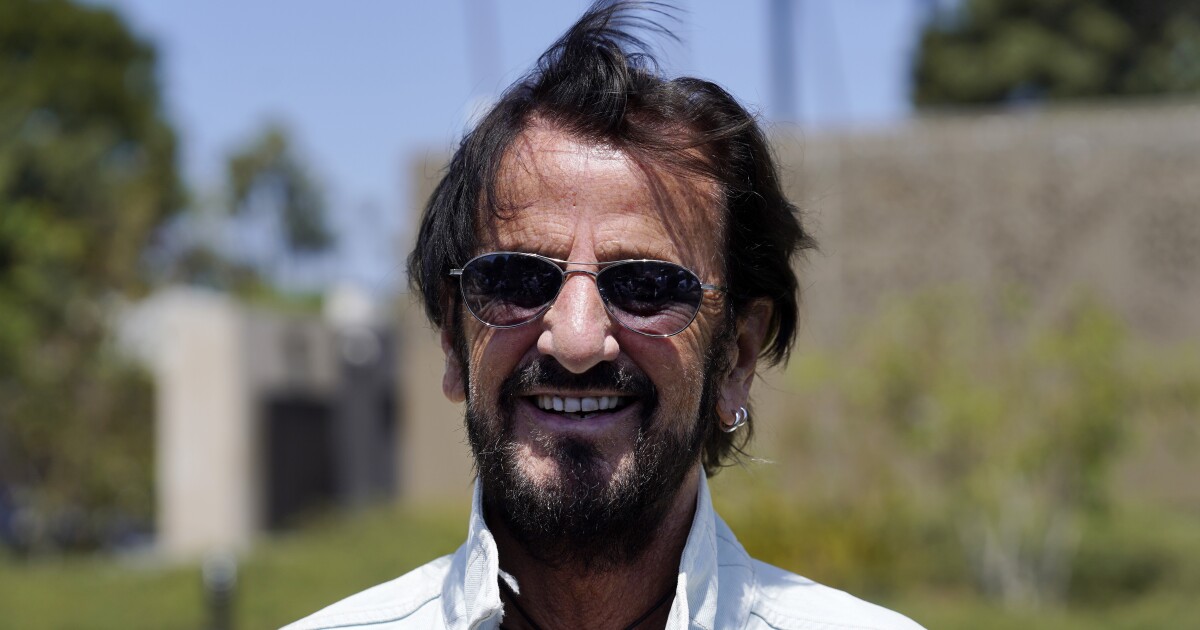In August 2021, Sherri Webb found a letter in her mailbox about a new pipeline project. It would be a climate solution, the letter from Summit Carbon Solutions read, capturing planet-warming carbon dioxide and pumping it out of the state to be stored deep underground.
The letter included an aerial map of Webb’s property and a word that immediately alarmed her: “easement”. To install the pipeline, planned to run underneath close to 2,000 miles of Iowa land, Summit wanted permission to dig underneath her farm, an 80-acre property near Shelby that has been in Webb’s family for over 100 years.
“Anytime somebody is threatening your land, the feathers just kind of go up in the back of your neck,” she says.
There are three CO2 pipeline projects in early stages of planning in Iowa. The companies behind them – Summit, Navigator and a partnership of Wolf Carbon Solutions and Archer Daniel Midlands – have been contacting landowners in hopes of getting them to grant easements.
But hundreds of people say they won’t sign. Not only that, they don’t want to see these projects go forward at all. Webb and other landowners from different Iowa counties, some who farm and some who rent to other farmers, have joined forces in an unusual alliance with Indigenous groups and environmental organizations, to fight against the pipelines.

Iowa residents have been here before with the Dakota Access pipeline (DAPL), a $3.8bn pipeline project completed in 2017. But where that pipeline was built to transport crude oil pumped from shale oil fields in north-west North Dakota through Iowa to Illinois, this new project is being proposed in the name of climate action.
Carbon capture and storage technology (CCS) works by capturing carbon dioxide emissions at their source to prevent their release into the atmosphere, then injecting the CO2 into rocks deep underground.
It has become a much-hyped answer to the need to rapidly reduce global carbon emissions. The Intergovernmental Panel on Climate Change’s latest working group report identifies seven pathways for limiting global warming – all but one include CCS. The Biden administration has pledged $2.3bn in funding to enhance capacity for existing US-based projects, each of which would be able to store at least 50m metric tons of captured CO2.
But critics are concerned that CCS is being treated as an easy fix for the climate crisis, especially by polluters who may rely on the technology to avoid strict emissions reductions. In some instances, captured carbon is used for enhanced oil recovery – a technique that uses liquefied CO2 to flush out residual oil – which serves to entrench fossil fuel production rather than replace it.
In Iowa, the pipelines – proposed for ethanol and fertilizer plants and any other agricultural facility that emits carbon dioxide – would transport the CO2 to nearby states, such as North Dakota, which have the right kind of rock formations to store the gas.
According to the companies, these projects would be able to store a total of 25m metric tons of CO2 a year and – of particular interest to Iowa’s corn ethanol industry – boost ethanol’s climate credentials. All three projects say their permits are for CO2 storage only and there are no plans to use the gas to extract oil.
Ethanol production has increased since it began in the 1970s, pitched as an environmentally friendly fuel alternative that could help wean the US off its dependence on foreign oil. “Ethanol is good for the environment and good for our economy,” said a spokesperson for Summit.
Iowa is the country’s top ethanol producer, making more than 30% of US supply. Its farmers grew 2.58bn bushels (91bn liters) of corn across 13.1m acres (5.3m hectares) in 2019, with most of it going to produce ethanol or to feed livestock.
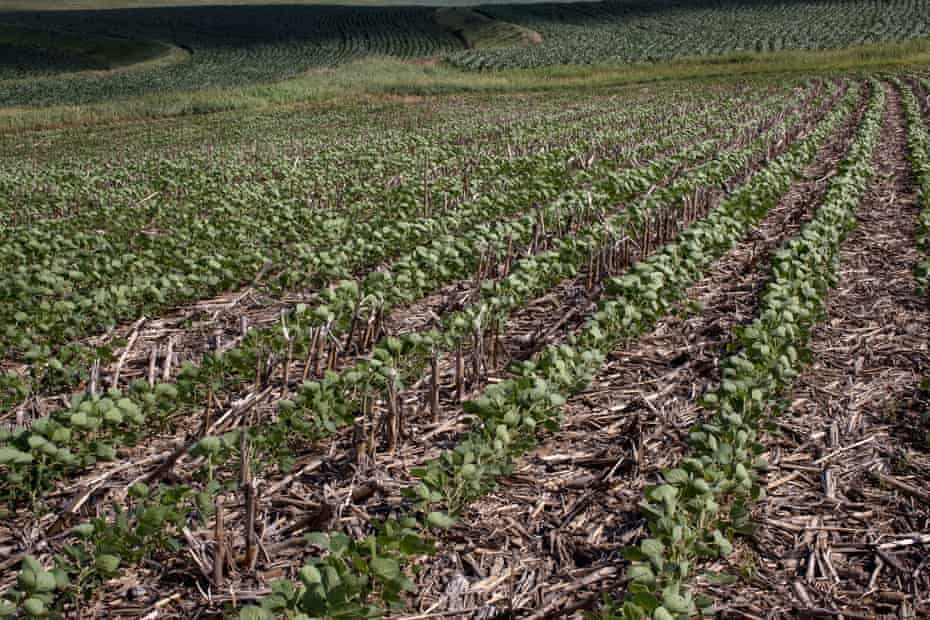
Part of what’s driving support for CCS in Iowa is the ethanol industry’s interest in self-preservation. Recent research suggests that ethanol is no better for the planet than fossil fuels, and may even be worse, due to the amount of farmland needed to grow corn and increased fertilizer use. According to one study, published in February, ethanol is at least 24% more carbon-intensive than gasoline.
Summit is hoping carbon capture and storage could help prove ethanol’s climate credentials. According to Chris Hill, the company’s director of permitting: “By proving that we’re sequestering CO2 and it’s not ever going to get to the atmosphere, we’re able to allow these ethanol partners to sell their fuels to the low carbon fuel market.”
But analysts from the non-profit Food & Water Watch say investment in carbon capture and storage is committing Iowa to an indefinite future of growing too much corn, which also means an indefinite future of pollution.
“Not only are we subsidizing ethanol, but we’re subsidizing the factory farm industry,” says Food & Water Watch’s Emma Schmit. Cheap corn is part of why factory farms can raise livestock animals cheaply, often in cramped conditions, says Schmit. “Because it’s so cheap to feed these animals.”
Pipelines can cause other types of damage, too. Iowa state researchers found that DAPL damaged soil stability and, two years after construction, reduced soybean yields by 25% and corn yields by 15%. While this led to regulatory change in Iowa, which now requires stricter land repair requirements for all pipeline companies, residents are still worried.
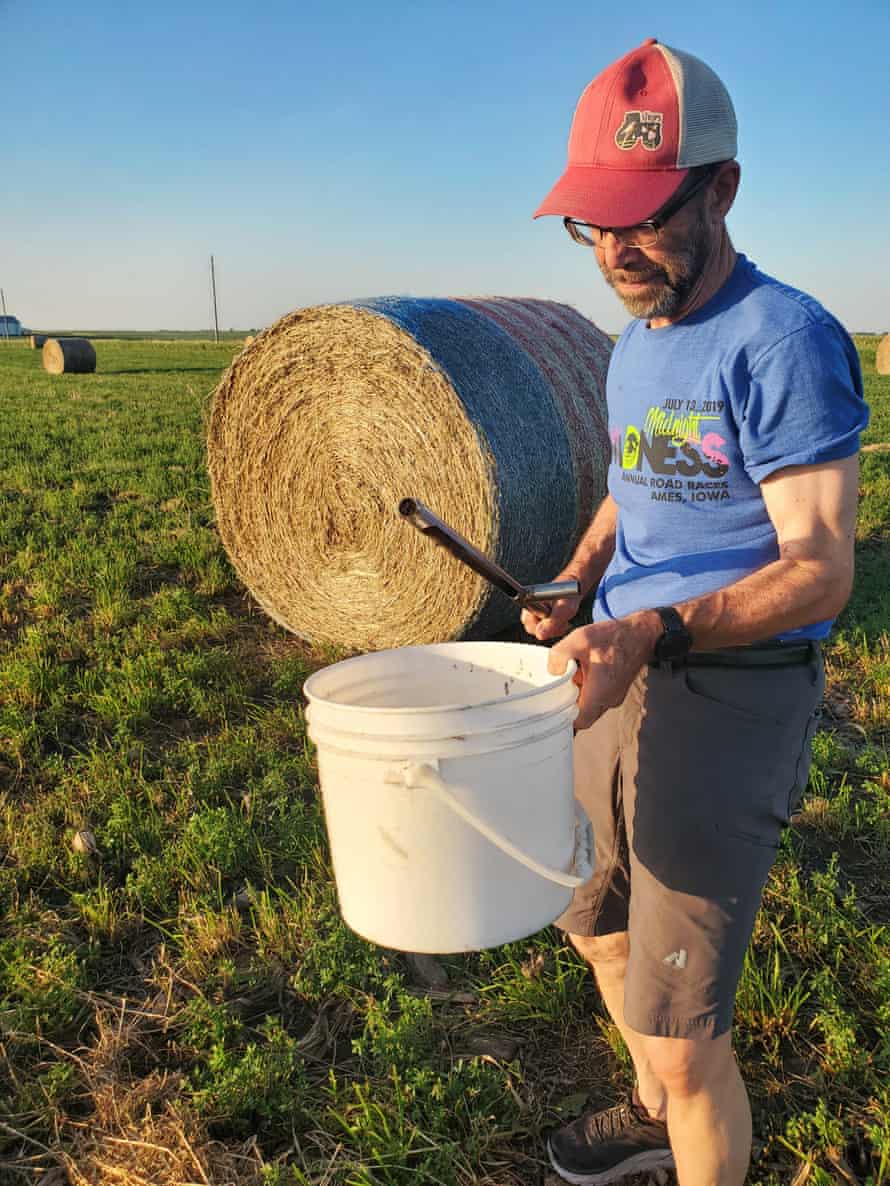
Lee Tesdell, who lives in Slater, Iowa, says DAPL still haunts him and his neighbors. “It was the actual physical damage to the landscape that shocked a lot of us,” he says. Iowa’s farmland is particularly vulnerable due to the system of water drainage tiles constructed underground over a century ago to help drain excess water in soils.
Mahmud Fitil, an Indigenous advocate with Great Plains Action Society, says it’s not just farmland that would be disturbed, but prairies and waterways. In May, the Winnebago Tribe of Nebraska requested an environmental impact study, citing concerns over Summit’s and Navigator’s pipeline routes.
Indigenous people in Iowa face an additional risk too, the threat of violence, Fitil says. Pipeline projects often bring in out-of-state workers and don’t always vet them, he says, pointing to a recent case in Minnesota, where two pipeline workers were arrested in a human trafficking sting operation. Indigenous people make up between 30% and 70% of trafficking victims. “There’s documented evidence that this type of behavior occurs,” Fitil says.
The risk of a leak also concerns critics. In 2020, a CO2 pipeline ruptured in Satartia, Mississippi, exposing hundreds of residents and causing disorientation, nausea and difficulty breathing.
Webb is worried that small towns in Iowa don’t have the necessary resources to deal with a pipeline leak. “Our little rural emergency units are not prepared,” she says. Fitil worries about pipelines being constructed at this much larger scale, and what could go wrong. “We don’t want to be the guinea pigs.”
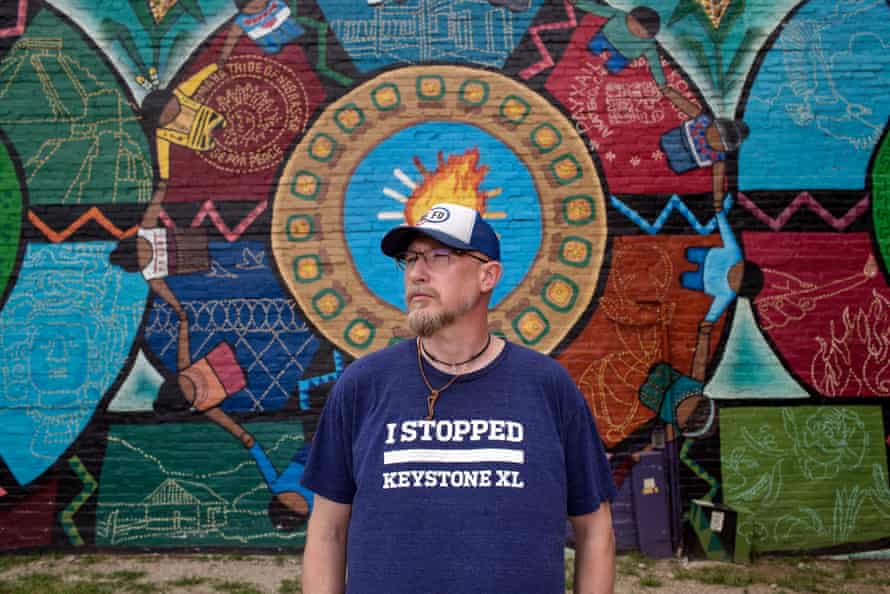
Companies representing all three projects told the Guardian that they have robust safety plans in place. A spokesperson for ADM said the company’s priority “is always the safety of our colleagues, our operations and the communities where we are present”.
Summit’s Hill calls the Mississippi leak “unfortunate” and entirely preventable, adding that he and his team analyzed the incident “very closely” to ensure nothing similar would happen along Summit’s pipeline route. “There’s over 5,000 miles of CO2 pipeline operating across the US … there’s not been one significant injury,” Hill says.
The pipeline companies also say they will make good any damage that may be caused to the land. “We are committed to returning the land to pre-construction conditions,” said a spokesperson for Navigator.
The projects do have some support – Summit says 30% of the easements it needs to lay the pipeline have already been granted – but opponents are not backing down.
Vickie Beck, a farmer who owns land in Dickinson county, says the tone of the first public meetings she attended about the pipeline made her feel unheard. She says she was told by Summit representatives: “If you don’t like it, we will consider eminent domain” – a law which gives the government the authority to seize land needed for a public project, provided the government compensates the landowner. In some cases, private companies involved in a public use project, like a pipeline, have been able to use eminent domain to acquire the property.
“Why should a private company, making private profits, be able to take their land? It’s not a public utility,” says Jessica Mazour, an environmental advocate with the Iowa chapter of the non-profit Sierra Club.
A yearlong moratorium to prevent use of eminent domain for the pipelines ultimately failed to pass the Iowa senate in May. But the legal fight is far from over. “We’re working on passing county ordinances to either stop or heavily derail pipelines,” says Schmit. A couple of landowners are running for local office – desperate to be at least one government voice willing to speak out against the pipelines.
Despite the enhanced regulatory protections in Iowa, none of the landowners the Guardian spoke to say they have faith the company representatives will repair the damaged land.
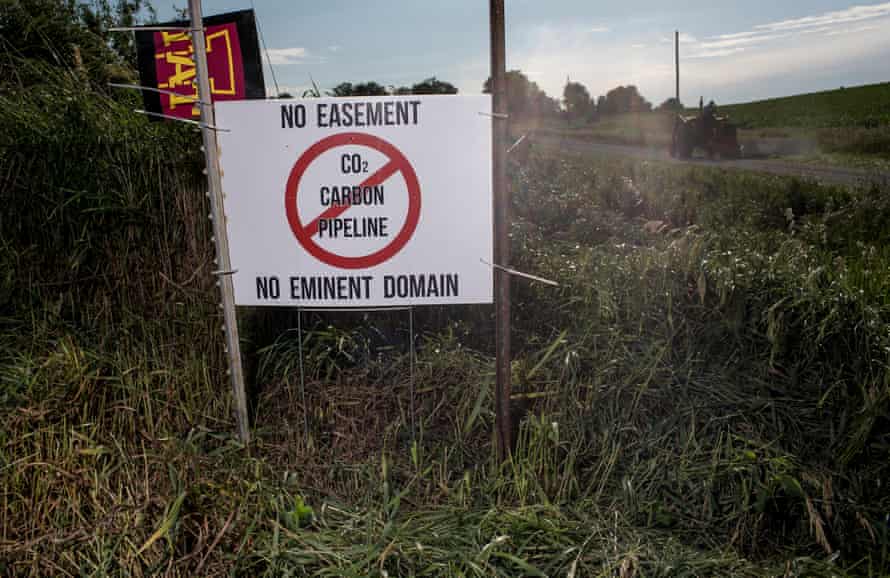
“Their side says whatever they want and does whatever they want,” says Richard McKean, who grows corn for one of the largest ethanol companies in the country, Poet. The carbon capture companies have said these projects will be good for ethanol growers, says McKean, adding: “They’re pushing that this is going to be the salvation.” But, he says, “That’s not true.”
But the campaigners against the pipeline believe they have momentum. Fitil says his group and other Indigenous organizers are doing things differently this time, working more closely with the coalition formed during the Dakota Access pipeline opposition, what he calls “a very unlikely alliance” of tribal groups, environmentalists and white rural landowners. “All kinds of different people are standing shoulder to shoulder in opposition.”
In Shelby, Webb feels the history of her family’s farm weighing on her. And she is particularly worried for the future. “The children of Iowa are our most precious resource, but the land is next, and what kind of land, or condition, will we be leaving our children if this pipeline is approved? What are we supposed to tell them – it’s not worth it to farm?”


